integratedelectricoven0330
About integratedelectricoven0330
Guide To Fitted Ovens And Hobs: The Intermediate Guide The Steps To Fitted Ovens And Hobs
Fitted Ovens and Hobs: An In-Depth Guide to Modern Cooking Appliances
Fitted ovens and hobs have ended up being a staple in modern-day kitchens, combining functionality, visual appeals, and innovative innovation. These kitchen appliances are created to seamlessly incorporate into kitchen surfaces, supplying the cooking lover with the tools required for effective meal preparation while maintaining a streamlined and orderly look. In this article, we will explore the different kinds of fitted ovens and hobs, their advantages, aspects to consider when picking them, and answers to frequently asked questions.

Comprehending Fitted Ovens and Hobs
Fitted ovens and hobs are appliances specifically developed to be built into kitchen cabinetry or counter tops for a smooth look. They can vary considerably in style, size, performance, and functions, which deal with diverse cooking requirements and kitchen styles.
Kinds Of Fitted Ovens
- Built-in Ovens: These ovens are set up straight into a wall or kitchen system and come in numerous setups and sizes.
- Double Ovens: A built-in variation that includes two separate oven compartments, enabling numerous dishes to be prepared at differing temperatures at the same time.
- Combination Ovens: These versatile appliances combine conventional baking with microwave innovation.
- Steam Ovens: Ovens that utilize steam for cooking, retaining wetness in food while improving tastes and nutrients.
- Single Ovens: A standard oven unit that is the most common type used in homes.
Kinds of Hobs
- Gas Hobs: These use burner for cooking, offering immediate heat and exact temperature level control.
- Electric Hobs: Powered by electrical energy, these hobs frequently feature smooth surface areas that make them easy to tidy.
- Induction Hobs: Utilizing electro-magnetic energy, induction hobs heat pots and pans directly rather than the hob surface, making them energy efficient and a safe choice.
- Blended Hobs: These provide both gas and electric choices, providing versatility for cooking styles.
Advantages of Fitted Ovens and Hobs
Fitted ovens and hobs use numerous advantages that boost the cooking experience:
- Space Efficiency: Designed to suit cabinetry, fitted appliances take up less space compared to standalone designs, developing a streamlined kitchen design.
- Aesthetic appeals: Fitted models frequently produce a more cohesive and aesthetically enticing kitchen style.
- Customization: Homeowners can select from a variety of designs, surfaces, and includes to match their kitchen design and cooking needs.
- Enhanced Functionality: Many modern-day fitted ovens and hobs boast sophisticated innovation, such as clever controls, self-cleaning features, and accurate temperature settings, which simplify cooking.
- Safety Features: Many hobs, specifically induction designs, have security functions such as car shut-off and child locks, promoting a safer cooking environment.
Elements to Consider When Choosing Fitted Ovens and Hobs
When picking fitted appliances for a kitchen, several factors ought to be considered to make sure the best option:
- Cooking Style: Different appliances accommodate numerous cooking habits. Home cooks ought to assess their typical meal preparation techniques to find appropriate appliances.
- Area and Layout: Measure the readily available space in the kitchen to make sure that the selected appliances fit nicely without hindering motion.
- Energy Efficiency: Choose appliances with energy-efficient ratings to decrease energy expenses and ecological impact.
- Technology and Features: Consider the wanted features, such as smart technology, self-cleaning modes, or specific cooking functions like steam or convection cooking.
- Budget: Determine a budget plan before making choices to make sure that the chosen designs line up with financial preparation.
Table: Comparison of Different Types of Ovens and Hobs
| Appliance Type | Pros | Cons |
|---|---|---|
| Built-in Ovens | Space-saving, customizable design | Installation cost can be high |
| Double Ovens | Prepare several meals at different temperatures | Takes up more area |
| Steam Ovens | Healthy cooking, retains nutrients | Usually greater expense |
| Gas Hobs | Quick heat control, chosen by chefs | Needs a gas line setup |
| Induction Hobs | Fast cooking, energy-efficient, safe | Needs compatible cookware |
| Electric Hobs | Easy to clean, steady cooking temperature levels | Heating times can be slower |
Regularly Asked Questions (FAQs)
1. What is the distinction between a built-in oven and a freestanding oven?
A built-in oven is integrated into kitchen cabinetry for a seamless appearance, while a freestanding oven stands alone and is frequently more noticeable and accessible.
2. Are induction hobs safe to utilize?
Yes, induction hobs are considered safe as they only create heat when suitable cookware is put on them, lowering the risk of burns.
3. Can I install a fitted oven myself?
While some individuals may select to install fitted oven (published on Kldmp) ovens themselves, it is usually advised to work with a professional to ensure correct installation and adherence to safety requirements.
4. What size of oven is perfect for a little kitchen?
In little kitchens, think about compact or single built-in ovens that fit within the offered area without compromising on cooking functionality.

5. Do fitted ovens and hobs require special upkeep?
Fitted appliances require basic maintenance, such as cleansing and routine checks. However, specific upkeep tasks depend on the type of oven or hob.
In conclusion, fitted ovens and hobs represent the epitome of contemporary kitchen style and performance. By understanding their types, benefits, and considerations, customers can make educated options that improve their cooking experiences while fitting effortlessly into their home. Whether creating gourmet meals or preparing family suppers, fitted ovens and hobs are important tools in any culinary area.
No listing found.
